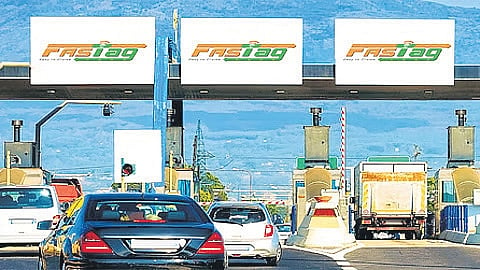

CHENNAI: The recent announcement of a FASTag annual pass priced at ₹3,000 is set to benefit frequent private commuters but could significantly affect toll revenues for private toll operators. Effective from August 15, 2025, the pass will be applicable to private vehicles—cars, vans, and jeeps—and will cover up to 200 trips (defined as crossing a toll plaza) or one year from the date of activation, whichever comes first. Initially, the scheme will apply only to national highways and expressways.
According to an analysis by Crisil Ratings, based on 40 operational toll road projects, a private vehicle currently pays around ₹70–80 per trip. If fully utilized for 200 trips, the annual pass would reduce the cost per trip to ₹15, translating to savings of up to 80% or ₹55–65 per trip.
“Private vehicles constitute 35–40% of the total traffic on the stretches in our sample. However, their revenue contribution is lower, at around 25–30%. If a third of these vehicle owners opt for the annual pass, toll operator revenues could be impacted by 4–8%,” said Anand Kulkarni, Director, Crisil Ratings.
He added that this revenue loss may require compensation. “Timely finalisation and swift implementation of a compensation mechanism will help maintain private sector confidence, which is vital for continued investment in the sector,” Kulkarni said.
Crisil noted that the shortfall may need to be addressed under the concession agreements. Consequently, a clear and timely compensation framework will be crucial. For now, Crisil expects the credit risk profiles of its rated toll operators to remain stable, supported by adequate cash flow coverage.
The compensation process will involve stakeholder consultations and the finalisation of modalities, which could result in some delays.
“Credit profiles of our rated toll road projects are expected to withstand temporary mismatches between the implementation of the annual pass and the compensation mechanism,” said Saina S. Kathawala, Associate Director, Crisil Ratings.
She noted that even if there is a six-month lag in receiving the initial compensation and one-third of private vehicles adopt the pass, the impact on debt service coverage ratios (DSCRs) will be minimal this fiscal. “Additionally, liquidity buffers of at least one quarter will provide further support to credit risk profiles. Once the compensation mechanism is operational, DSCRs are expected to return to current levels,” she added.
The transition to the annual pass system will require an additional layer of coordination with the National Highways Authority of India (NHAI), the implementing agency, as compared to the current real-time toll collection model. However, NHAI’s strong payment track record, particularly in annuity-based projects, is expected to mitigate counterparty risk.
Overall, while the annual pass will offer clear benefits to users, its medium-term impact on toll road operators is likely to be modest. That said, a higher-than-expected uptake of the pass could increase revenue losses in the interim, warranting close monitoring, Crisil Ratings said.